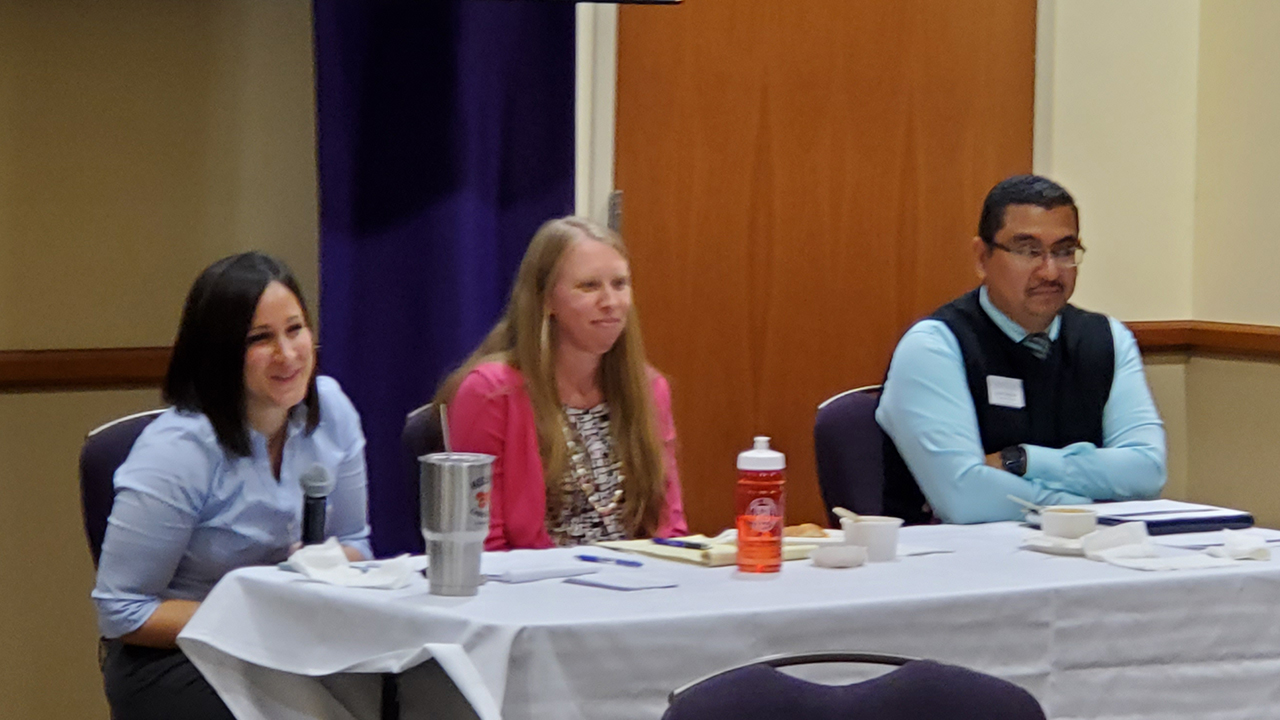Faculty and Staff Learn About Implicit Bias

The Office of Equity and Diversity’s final Diversity + Inclusion luncheon of 2019 began with a fairy tale and a follow-up quiz.
It was part of a recent lecture for faculty and staff on Understanding Implicit Bias, Exploring the Origin of Beliefs and Embracing Difference, presented by Maria Marinucci, director of the Cross Cultural Centers, José Sanchéz, assistant director of the Cross Cultural Centers, and Jessica Nolan, Ph.D., associate professor of psychology.
Marinucci read a brief story about a king who could no longer walk, his popular daughter, a beautiful witch and an ugly witch. The two dozen faculty and staff in attendance then answered true-or-false questions about the characters. Participants were surprised to learn that the story did not say the king was old, his daughter was beautiful, or that the ugly witch was wicked.
Marinucci noted the audience assumed those things were true because of the unconscious associations we make: “could no longer walk” with “old,” for example, and “ugly” with “wicked.”
Dr. Nolan said those associations are often due to portrayals in television, media and popular culture.
“You live in a society that sends negative messages about certain people,” she added. “It’s very common for people to not have an explicit bias, but to still have an unconscious bias.”
This issue is important because it can affect anyone. “Imagine you’re in a job interview where you are facing implicit bias. You may not perform as well in the interview because of that,” Dr. Nolan said.
Sanchez shared examples of implicit bias that students have reported to him. Some faculty, for instance, may assume that students with certain accents are poor writers, or that students in a certain identity group have a certain style of class participation, such as subdued or aggressive.
Faculty and staff can try to be more aware and understanding of their own biases. Asking peers for feedback can help. “Realizing you might have an implicit bias can be a good start,” Marinucci said.






